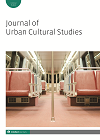
Full text loading...

Since 2013, the cultural–historical project Rolé Carioca has encouraged residents of Rio de Janeiro to reconnect with their city. Focusing on the project’s walking tours, this article examines how Rolé Carioca navigates a neo-liberal context to encourage residents of Rio to return to the street from the fortified enclaves to which they have retreated for business, leisure and housing and to visit long-denigrated areas of the city, such as its suburbs. This article elucidates the infrastructures Rolé Carioca uses to transform areas of Rio into sites of leisure for its walking tour participants. It argues that the project pursues its aims by encouraging participants to engage with their city in ways akin to, but subtly different from the flâneurs of the nineteenth century. It also probes the history and paradoxes of the means by which Rolé Carioca seeks to reconnect those who attend its events with Rio.

Article metrics loading...

Full text loading...
References


Data & Media loading...

Publication Date:
https://doi.org/10.1386/jucs_00052_1 Published content will be available immediately after check-out or when it is released in case of a pre-order. Please make sure to be logged in to see all available purchase options.